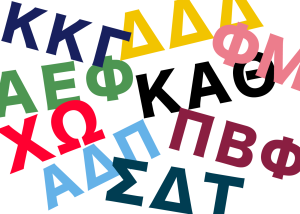Acting activism: ‘Project Jane’ opens in Lupin Theater
November 16, 2022
In many ways, the future of American democracy was determined on Tuesday, with many elections hinging on the issue of reproductive rights. As a result, the timing for the opening of “Project Jane” could not be more appropriate.
This newly devised work from Tulane’s Department of Theatre and Dance comes in response to the recent Supreme Court decision Dobbs v. Jackson, which effectively removed constitutional protections for abortion. In this sense, the play is extremely timely; and yet, it is also timeless, its setting and subject matter extending much further than current events. Its frequent character-breaking and scenes that fluctuate between immersive action and audience participation also contribute to this timelessness. In the words of cast member Syna Pal, the goal is to “[show] how our present and our past all intersect to decide where the world is headed.”

The show opens with each of the cast members introducing themselves, their real selves, complete with mentionings of their majors and fun facts. On stage, a live viola player — Sixto Franco — provides the show’s score and sound effects. In addition to this breaking of the fourth wall, our expectation of being grounded in the present is subsequently shattered. We are thrust forward to the year 3000, an idealistic and unnerving future in which the gender binary has disintegrated, babies emerge from the artificial uteruses of repro-bots and people speak in the same hollowly-melodious tones as the machines who birthed them.
From this distanced point of view, we learn the story of the Jane Collective, a group of college-age women in Chicago who provided over 11,000 underground abortions in the years before Roe v. Wade. According to director Monica Payne, the story of the Janes — made increasingly relevant since the overturning of Roe — was the impetus for the play’s creation.
“…They [the Janes] were, at that time, the same age as my students are now…,” Payne said. “It’s very inspiring to say, look at what these people did, and they were exactly your age when they took this dramatic action.”
This play is in itself a form of “dramatic action.” In the devising process, the six cast members generated all of the verbal and physical language of the play themselves. Through the arrangement of the scenes, they create a syntax through which broader meanings emerge. At times, they use this language to make conversation, not just with an imagined audience but with the actual one sitting before them.
Interspersed within the play’s narrative are “lights-up” moments when the play’s educational nature comes into the spotlight. Audience members are encouraged to answer questions, read information and even hop on stage. In these moments, I braced myself for potential preaching to the choir, a factor that instantly turns politically-charged theater into a parody of itself. While the play got dangerously close at times, especially considering its “choir” of college-aged students, I found that in the end, my concern was unwarranted. The content of the play and its performance was enough to support its ambitious goals.
Nevertheless, the point of this performance is not to make audiences feel comfortable or even to feel good. One of the play’s biggest successes is making the familiar strange, both in terms of the theater and the current status of reproductive rights. Actor Elizabeth Currie emphasized this idea.
“…We need to be shocked again… and [this show] is a wake-up call,” Currie said.
The circuitous track “Project Jane” takes through time evokes what many people felt following the decision of Dobbs v. Jackson — that we had gone back in time, and that, in effect, we were again in the position of the Janes. With abortion now fully illegal in Louisiana and weekly requests for abortion pills higher and more rapidly increasing than in any other state, the show is made particularly powerful.
“Project Jane” is a model of what it means to make action and take action at a moment in history when the past, present and future feel more bound up than they have in a long time.









Leave a Comment